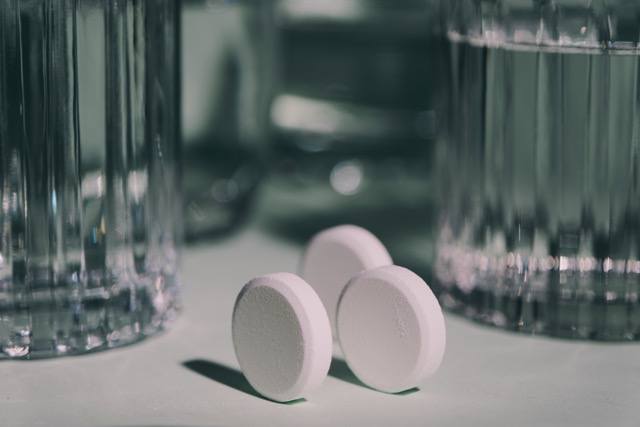From Energy Production to Anti-Aging: The Importance of Mitochondria
What crucial role mitochondria play in cell aging and longevity

In the complex world of human biology, there is a tiny organelle that silently determines our fate: the mitochondria. These cellular powerhouses are our body's unknown heroes and play critical roles in aging, longevity, and overall health. We would like to discuss exactly what influence they have on our well-being here.
Mitochondria: The powerhouses within
Mitochondria are something like the power plants of our cells. Their main task is to produce adenosine triphosphate (ATP), the cellular currency for energy. This energy is the lifeblood of our cells and powers everything from muscle contraction to brain function.
Mitochondria and the aging process
In the course of our lives, our cells are subject to an aging process, from which even the mitochondria are not immune. As we age, mitochondria are affected by factors such as free radicals or stress damaged, which leads to a decrease in their performance. This gradual loss of mitochondrial function is a characteristic of aging and contributes to the physical and cognitive impairment that we often associate with aging.
“Mitochondria are essential for healthy aging and long life. ”
Research has shown that impaired mitochondrial function is linked to a range of age-related conditions, including neurodegenerative diseases such as Alzheimer's and Parkinson's, as well as heart disease and diabetes.
Mitochondria: guardians of longevity
On the other hand, keeping our mitochondria healthy seems to be the key to a longer life. Studies of people who have lived to be over 100 years old have shown that they tend to have more youthful and functional mitochondria compared to their peers. This suggests that maintaining mitochondrial health is an important component in extending our lifespan Could be.
An exciting branch of research is investigating the role of nutritional practices such as calorie restriction and intermittent fasting in promoting mitochondrial health. In animal studies, these dietary practices have shown promising effects on mitochondrial function, which could contribute to a longer life expectancy. The exact mechanisms are still being researched, but the potential benefits are of great interest to anyone who wants to increase their life expectancy.
Mitochondrial health for optimal wellbeing
Caring for mitochondria isn't just about living longer, it's also about living a better life. Healthy and efficient mitochondria result in higher energy levels, better cognitive functions and improved physical performance.
So what can you do to support these cellular powerhouses? It starts with lifestyle choices. Regular physical activity, a balanced diet high in antioxidants and effective stress management are the key components. In addition, new research suggests that certain supplements, such as coenzyme Q10 (CoQ10) and nicotinamide riboside (NR), may improve mitochondrial function. It is recommended that you consult a doctor before taking supplements.
Mitochondria may be small, but their impact on aging, longevity, and overall health is huge. Understanding their role in our wellbeing is a crucial step towards living longer and healthier lives. By adopting a lifestyle that focuses on mitochondrial health, we can not only extend our lifespan, but also make optimal use of it.
Mitochondria will undoubtedly be at the forefront of further research into health and longevity. The subtleties of these cellular powerhouses remind us of the wonders of nature and the limitless discovery potential that lies ahead of us.
References
- Lopez-Otín, C., Blasco, M.A., Partridge, L., Serrano, M., & Krömer, G. (2013). The Hallmarks of Aging Cell, 153 (6), 1194-1217.
- Miquel, J., Economos, A.C., Fleming, J., & Johnson, J.E. (1980). Mitochondrial role in cell aging. Experimental Gerontology, 15 (6), 575-591.
- Barya, G. (2014). The mitochondrial free radical theory of aging. Progress in Molecular Biology and Translational Science, 127, 1-27.
- Lopez-Lluch, G., Hunt, N., Jones, B., Zhu, M., Jamieson, H., Hilmer, S.,... & de Cabo, R. (2006). Calorie restriction induces mitochondrial biogenesis and bioenergetic efficiency. Proceedings of the National Academy of Sciences, 103 (6), 1768-1773.
- de Cabo, R., & Mattson, M.P. (2019). Effects of intermittent fasting on health, aging, and disease. New England Journal of Medicine, 381 (26), 2541-2551.
- Trammell, S.A., Schmidt, M.S., Weidemann, B.J., Redpath, P., Jaksch, F., Dellinger, R.W.,... & Brenner, C. (2016). Nicotinamide riboside is uniquely and orally bioavailable in mice and humans. Nature Communications, 7, 12948.
Publiziert
19.1.2025
Kategorie
Longevity

Experte
Scientific Terms
Mitochondrion
Mitochondria are often referred to as the cell's powerhouse and break down nutrients to generate energy in a process called cellular respiration. They contain their own circular genome.
NAD
Nicotinamide adenine nucleotide, a chemical used for more than five hundred chemical reactions and for sirtuins, which remove aceryl groups from other proteins, such as histones, to turn off genes or give them cell protective functions. A healthy diet and exercise increase NAD levels. The “+” sign that you sometimes see, as in NAD, indicates that it has no hydrogen aroma.
NMN
NMN (nicotinamide mononucleotide) is the immediate precursor of NAD+, an essential coenzyme and important metabolic partner that is found in every cell in the human body and is involved in over 500 different cell reactions. NAD+ is synthesized by the cell through various pathways, some of which are more complex than others. The primary route of NAD+ synthesis involves the conversion of nicotinamide (NAM) to NMN and the subsequent conversion of NMN to NAD+. As an immediate precursor to NAD+, NMN is a highly efficient precursor that requires the fewest steps and the least amount of energy to convert to NAD+.
In the complex world of human biology, there is a tiny organelle that silently determines our fate: the mitochondria. These cellular powerhouses are our body's unknown heroes and play critical roles in aging, longevity, and overall health. We would like to discuss exactly what influence they have on our well-being here.
Mitochondria: The powerhouses within
Mitochondria are something like the power plants of our cells. Their main task is to produce adenosine triphosphate (ATP), the cellular currency for energy. This energy is the lifeblood of our cells and powers everything from muscle contraction to brain function.
Mitochondria and the aging process
In the course of our lives, our cells are subject to an aging process, from which even the mitochondria are not immune. As we age, mitochondria are affected by factors such as free radicals or stress damaged, which leads to a decrease in their performance. This gradual loss of mitochondrial function is a characteristic of aging and contributes to the physical and cognitive impairment that we often associate with aging.
“Mitochondria are essential for healthy aging and long life. ”
Research has shown that impaired mitochondrial function is linked to a range of age-related conditions, including neurodegenerative diseases such as Alzheimer's and Parkinson's, as well as heart disease and diabetes.
Mitochondria: guardians of longevity
On the other hand, keeping our mitochondria healthy seems to be the key to a longer life. Studies of people who have lived to be over 100 years old have shown that they tend to have more youthful and functional mitochondria compared to their peers. This suggests that maintaining mitochondrial health is an important component in extending our lifespan Could be.
An exciting branch of research is investigating the role of nutritional practices such as calorie restriction and intermittent fasting in promoting mitochondrial health. In animal studies, these dietary practices have shown promising effects on mitochondrial function, which could contribute to a longer life expectancy. The exact mechanisms are still being researched, but the potential benefits are of great interest to anyone who wants to increase their life expectancy.
Mitochondrial health for optimal wellbeing
Caring for mitochondria isn't just about living longer, it's also about living a better life. Healthy and efficient mitochondria result in higher energy levels, better cognitive functions and improved physical performance.
So what can you do to support these cellular powerhouses? It starts with lifestyle choices. Regular physical activity, a balanced diet high in antioxidants and effective stress management are the key components. In addition, new research suggests that certain supplements, such as coenzyme Q10 (CoQ10) and nicotinamide riboside (NR), may improve mitochondrial function. It is recommended that you consult a doctor before taking supplements.
Mitochondria may be small, but their impact on aging, longevity, and overall health is huge. Understanding their role in our wellbeing is a crucial step towards living longer and healthier lives. By adopting a lifestyle that focuses on mitochondrial health, we can not only extend our lifespan, but also make optimal use of it.
Mitochondria will undoubtedly be at the forefront of further research into health and longevity. The subtleties of these cellular powerhouses remind us of the wonders of nature and the limitless discovery potential that lies ahead of us.
Referenzen
- Lopez-Otín, C., Blasco, M.A., Partridge, L., Serrano, M., & Krömer, G. (2013). The Hallmarks of Aging Cell, 153 (6), 1194-1217.
- Miquel, J., Economos, A.C., Fleming, J., & Johnson, J.E. (1980). Mitochondrial role in cell aging. Experimental Gerontology, 15 (6), 575-591.
- Barya, G. (2014). The mitochondrial free radical theory of aging. Progress in Molecular Biology and Translational Science, 127, 1-27.
- Lopez-Lluch, G., Hunt, N., Jones, B., Zhu, M., Jamieson, H., Hilmer, S.,... & de Cabo, R. (2006). Calorie restriction induces mitochondrial biogenesis and bioenergetic efficiency. Proceedings of the National Academy of Sciences, 103 (6), 1768-1773.
- de Cabo, R., & Mattson, M.P. (2019). Effects of intermittent fasting on health, aging, and disease. New England Journal of Medicine, 381 (26), 2541-2551.
- Trammell, S.A., Schmidt, M.S., Weidemann, B.J., Redpath, P., Jaksch, F., Dellinger, R.W.,... & Brenner, C. (2016). Nicotinamide riboside is uniquely and orally bioavailable in mice and humans. Nature Communications, 7, 12948.
Publiziert
19.1.2025
Kategorie
Longevity

Wissenschaftliche Begriffe
Mitochondrion
Mitochondria are often referred to as the cell's powerhouse and break down nutrients to generate energy in a process called cellular respiration. They contain their own circular genome.
NAD
Nicotinamide adenine nucleotide, a chemical used for more than five hundred chemical reactions and for sirtuins, which remove aceryl groups from other proteins, such as histones, to turn off genes or give them cell protective functions. A healthy diet and exercise increase NAD levels. The “+” sign that you sometimes see, as in NAD, indicates that it has no hydrogen aroma.
NMN
NMN (nicotinamide mononucleotide) is the immediate precursor of NAD+, an essential coenzyme and important metabolic partner that is found in every cell in the human body and is involved in over 500 different cell reactions. NAD+ is synthesized by the cell through various pathways, some of which are more complex than others. The primary route of NAD+ synthesis involves the conversion of nicotinamide (NAM) to NMN and the subsequent conversion of NMN to NAD+. As an immediate precursor to NAD+, NMN is a highly efficient precursor that requires the fewest steps and the least amount of energy to convert to NAD+.
.svg)














